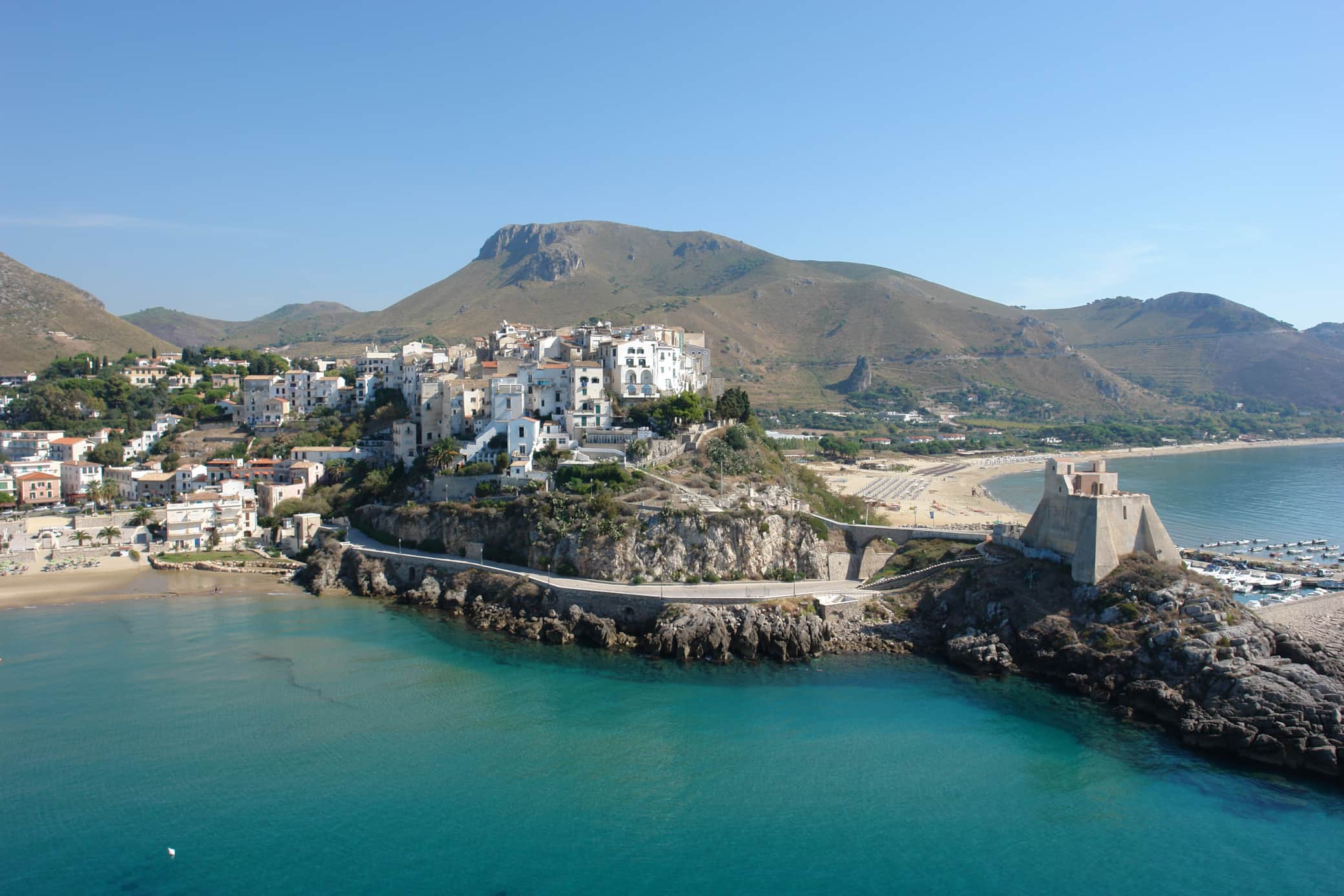Sperlonga, a land to live!
On our coast, dear to the Maga Circe and its enchanted travelers, the Romans were the first to settle at the end of the Republican age, creating magnificent residences, attracted by the beauty of the place and the climate.
HISTORY
Emperor Tiberio has the merit of having built an imposing villa that also included a large cave in which were placed valuable works in marble. It is precisely these numerous natural cavities, in Latin "speluncae" that determine the name of the current village. After the fall of Rome, the ruins of the imperial residence served as shelters to communities and local populations.
From these populations come the first inhabitants of Sperlonga who slowly moved and perched on the hill of San Magno. A need determined not only by the diseases of the marshes, but by the continuous attacks by pirates who infested the Tyrrhenian Sea. Watchtowers were built, but everything was useless and the small town was razed to the ground in August 1534 by the hordes of pirate Kaireddin Barbarossa.
In the eighteenth and eighth centuries Sperlonga assumed the current characteristic in the form of a tortoise and was enriched with a church and several palaces.
TODAY
Despite a rich variety of products of the earth the great development for the local economy comes only after the construction of the coastal Terracina-Gaeta, opened in 1957 that made known the ancient fishing village and the precious collection of marble of Villa Tiberio launching Sperlonga as one of the most popular tourist and cultural destinations in Lazio.
The village, included in the circuit of the most beautiful in Italy, for over 15 consecutive years can boast the recognition of the Blue Flag for clean waters and eco-sustainable initiatives and has been included in the international network of Cittaslow certified cities. A long cycle path runs through the town from the promenade to the upper area, promoting the reduction of smog and making the whole municipality "family size".
Today Sperlonga is a lively maritime village full of commercial and receptive activities that have developed along the almost 8 km of sandy beaches and between the characteristic alleys of the historic center. The village boasts a great culinary tradition based on the fresh fish of the Tyrrhenian, no shortage of drink-bars and discos for young people who can move in total safety thanks to a shuttle service on weekends.
TO BE SEEN
The church of Santa Maria di Spelonca already existed in 1135, the Central Tower, the last survivor of an elaborate sighting tower system, the Truglia Tower built in 1532 on a previous Roman tower. The latter was destroyed by pirate Kaireddin Barbarossa and then rebuilt in various eras and finally be used as the headquarters of the Guardia di Finanza since 1969. Currently it is home to the Regional Natural Park "Riviera di Ulisse".
The villa of the Roman emperor Tiberio is protected by the archaeological museum of Sperlonga which contains marble finds of great interest including the colossal group of Polyphemus found in 1957.
On the territory of Sperlonga there are also two famous lakes for water skiing. The Long Lake is separated from the sea only by a sand dune due to the particular ecosystem, the area has been declared of community importance.
The San Puoto Lake instead is of volcanic origin, so much that its depth has become a legend in the country. Excursions and sports activities are organized in both basins.
The coastal stretch of the Riviera di Ulisse has other centers of high interest such as San Felice Circeo with its natural park, Terracina with the Temple of Jupiter, Fondi with the Baronial Castle, Gaeta with its centuries-old seafaring tradition. And let's not forget the Abbey of Cassino, Rome and Naples just over 100 km away, Pompeii and a thousand other beauties of our fantastic Italy.







































